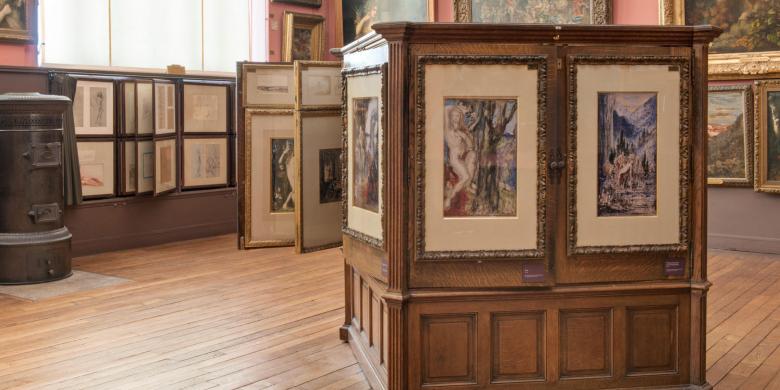The Musée Gustave Moreau regularly lends works from its collections to exhibitions in France and abroad.
Discover exhibitions featuring works by the artist, beyond the walls of his house-museum.
In France
In 2024:
- EN JEU ! LES ARTISTES ET LE SPORT | Paris, Musée Marmottan Monet
-
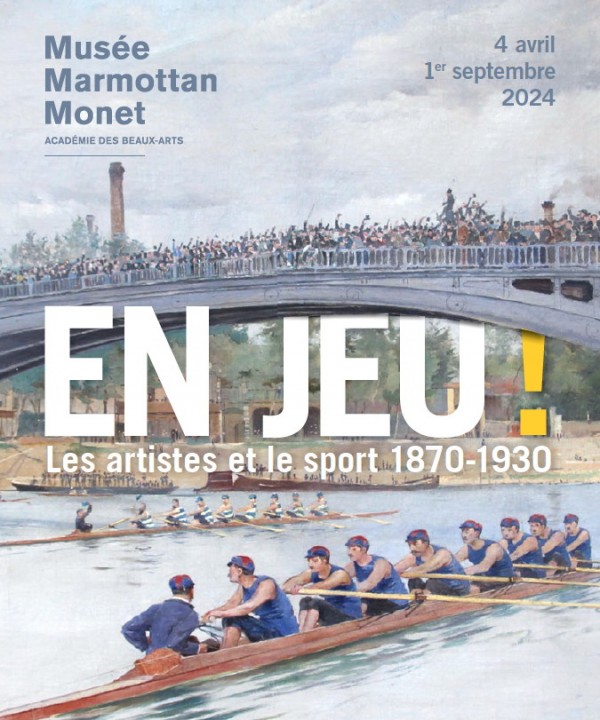
From April 4 to September 1, 2024, the Musée Marmottan Monet is hosting the exhibition En Jeu !, on the occasion of the Paris 2024 Olympic and Paralympic Games. The Gustave Moreau museum is lending an engraving (Inv. 11912-24) after The Wrestlers by Alexandre Falguière (Paris, Musée d'Orsay).
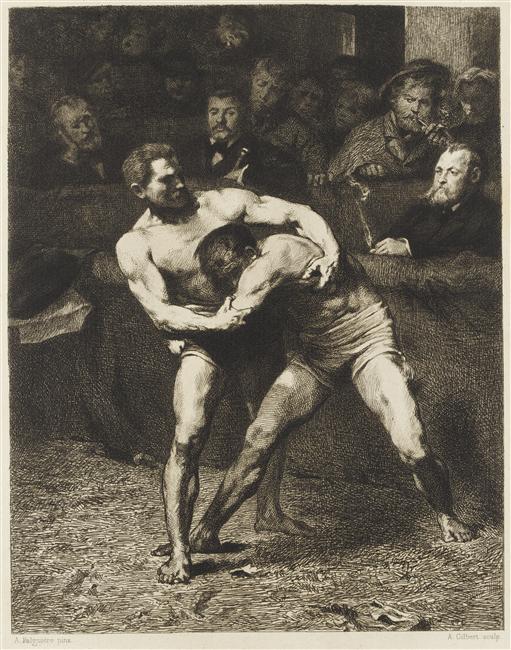
A. Gilbert after Alexandre Falguière, Les Lutteurs (MGM
Inv. 11912-24)
- ENTRE LES LIGNES. ART ET LITTÉRATURE | Montpellier, MO.CO. Montpellier Contemporain
-
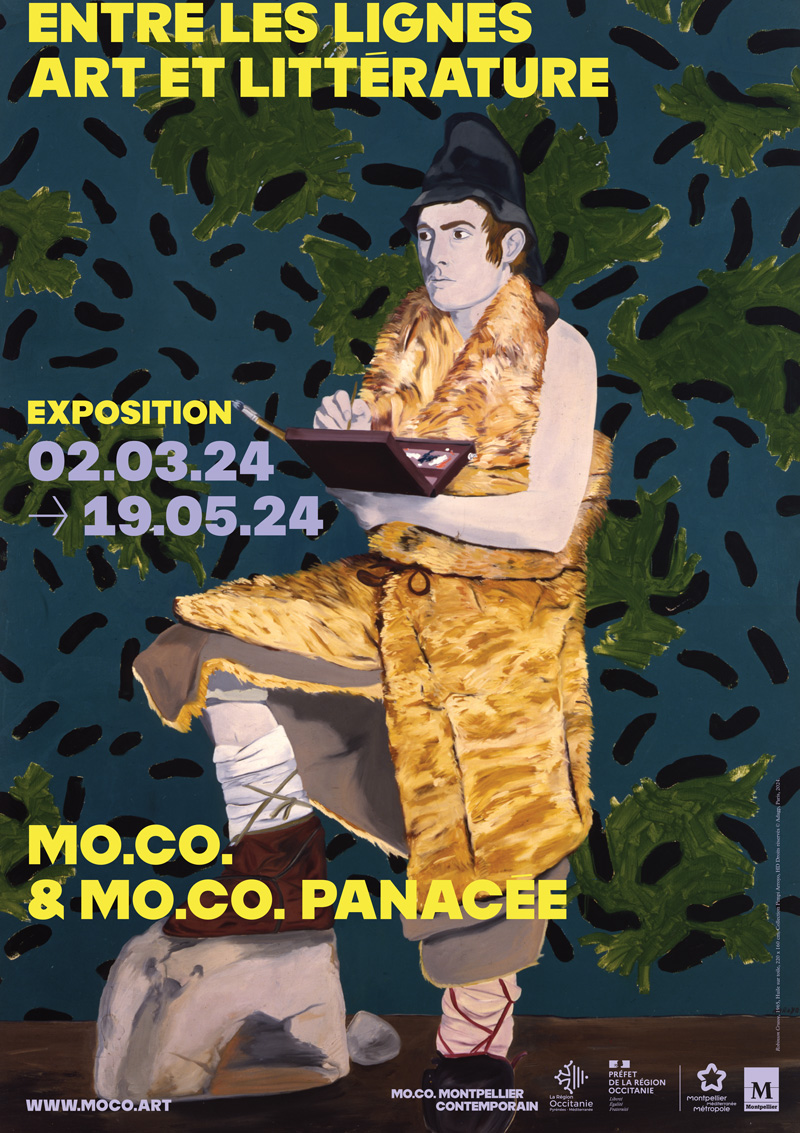
From March 2 to May 19, 2024 at the MO.CO. Montpellier Contemporain, the exhibition Entre les lignes. Art and Literature "explores the immense links between art and literature, between artists of words and those of forms."
Two paintings from the Musée Gustave Moreau collections, Hercules and the Lernaean Hydra(Cat. 26) and Salomé(Cat. 134), are featured in the exhibition's introductory section to highlight the links between Moreau's work and the writings of Émile Zola and Joris-Karl Huysmans.These two works allow us to evoke the two paintings that were presented by Moreau at the Salon of 1876 (now preserved in the United States at the Art Institute of Chicago and at the Hammer Museum in Los Angeles) and their commentary by Zola, as well as the lengthy description of Salomé that Huysmans indulges in, in 1884, in his novel À rebours (excerpts below).
Hercules and the Hydra of Lerna
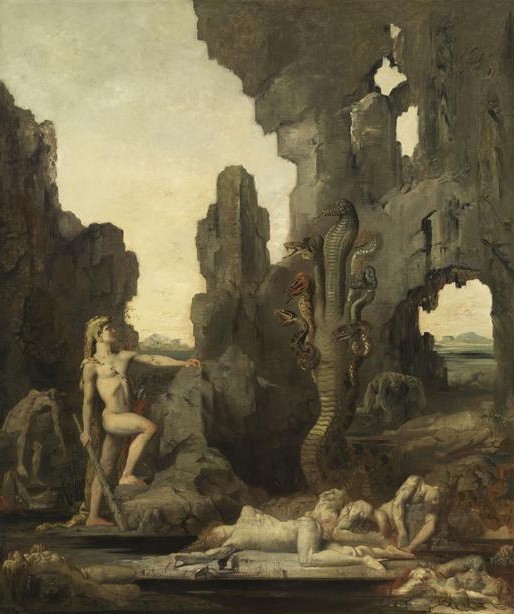
Gustave Moreau. Hercules and the Hydra of Lerna (Cat. 26)
oil on canvas, 1.55 x 1.32 mKilling the Lernaean Hydra is the second of the twelve tasks imposed on Hercules (Heracles) by Eurystheus, notably compiled in Hesiod's Theogony. In the myth, the Lernaean Hydra is a seven-headed aquatic serpentine creature that lived in a swamp near the source of Amymoné and ravaged the country of Argos.
The numerous appearances of the ancient hero in Moreau's canvases betray the fascination this myth exerted on the artist's imagination. A case in point is the large composition Les Filles de Thespius (Musée Gustave Moreau, Cat. 25), in which Moreau chooses to evoke a strange and little-represented episode of the Herculean myth (the painting, begun in 1853, took over forty years to complete). In 1859, during his stay in Naples, Moreau made a watercolor copy of the famous Herculaneum fresco Hercules recognizing his son Telèphe (Musée Gustave Moreau, Inv. 13618). He also plans to dedicate a polyptych to it, of which the Gustave Moreau museum holds several sketches.This is an earlier, and smaller, version of the 1876 Salon painting.
While the hero's position is different, it shows a youthful Hercules, defying the monster with his club in hand, and the rock formations at the bottom of which lie the lifeless bodies of the victims, providing a dramatic backdrop to the confrontation.Salomé
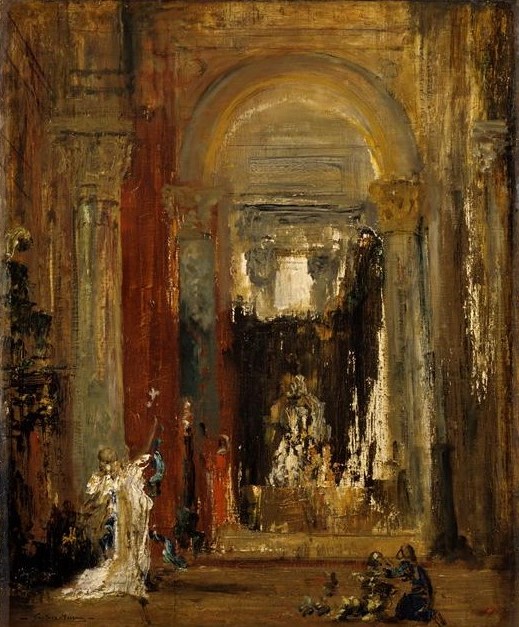
Gustave Moreau. Salomé (Cat. 134)
oil on canvas, 0.65 x 0.55 mSalome is a young oriental princess, mentioned in the Bible. At the request of her mother, Queen Herodias, she obtains "on a platter, the head of John the Baptist" in exchange for dancing in front of King Herod. This is Herodias' revenge on the prophet, who has denounced her illegitimate union to Herod (for she is already married to Herodias, Herod's brother).
If this is a story about a prophet, it's a story about a prophet Although a fairly minor figure in the New Testament, her posterity in the arts is considerable: she is a key subject for many 19th-century artists and authors, who find in her the embodiment of the femme fatale (Wilde, Regnault...).Her figure is at the heart of numerous paintings and watercolors by Moreau, who depicts her sometimes dancing, sometimes witnessing the decollation of John the Baptist, sometimes seeing the bloodied head of the prophet appear.
The canvas on loan is a compositional study that offers a first sketch of the space where the dance takes place: a church interior where high pilasters form a string of arches, creating a dark, mystical atmosphere. In the background is King Herod's throne, while Salome, dressed in an ample white gown, appears in the lower left-hand corner. Here we find most of the compositional elements of the 1876 Salon painting, where "everything takes place in a mysterious sanctuary, which brings the mind to gravity and the idea of higher things." Ary Renan, Gustave Moreau, 1900
The representation of the princess, stripped but richly adorned, provocative, corresponds to the tempting and malevolent vision of the character, popular in the 19th century.
Emile Zola and the works of the 1876 Salon
Emile Zola, a viewer of the two canvases at the 1876 Salon, was far from won over by the painter, as evidenced by his review in Le Messager de l'Europe (St. Petersburg, June 1876) of "Gustave Moreau's two so bizarrely archaic paintings, in front of which the bourgeois remain planted as if in front of a rebus". The author refers to the two paintings again in Part VI of his article "L'école française de peinture en 1878", also published in Le Messager de l'Europe (June 1878).
"I will have noted all the curiosities of modern painting when I have dealt with Gustave Moreau, whom I have saved for last as the most astonishing manifestation of the extravagances or an artist can fall into in the quest for originality and hatred of realism. [
To discover the rest of these two reviews:
Huysmans and Salomé
In chapter 5 of his novel À rebours (1884), Huysmans features Des Esseintes, a character who has acquired the masterpiece, and on this occasion delivers a long and vivid description of the painting.
"In the perverse odor of perfumes, in the overheated atmosphere of this church, Salomé, left arm extended, in a gesture of command, right arm folded, holding, at face height, a large lotus, moves slowly forward on pointe, to the chords of a guitar whose strings a crouching woman plucks. [...]"
To read or reread this passage in full:
- CHARLES GOUNOD ET LES BEAUX-ARTS | Saint-Cloud, Musée des Avelines
-
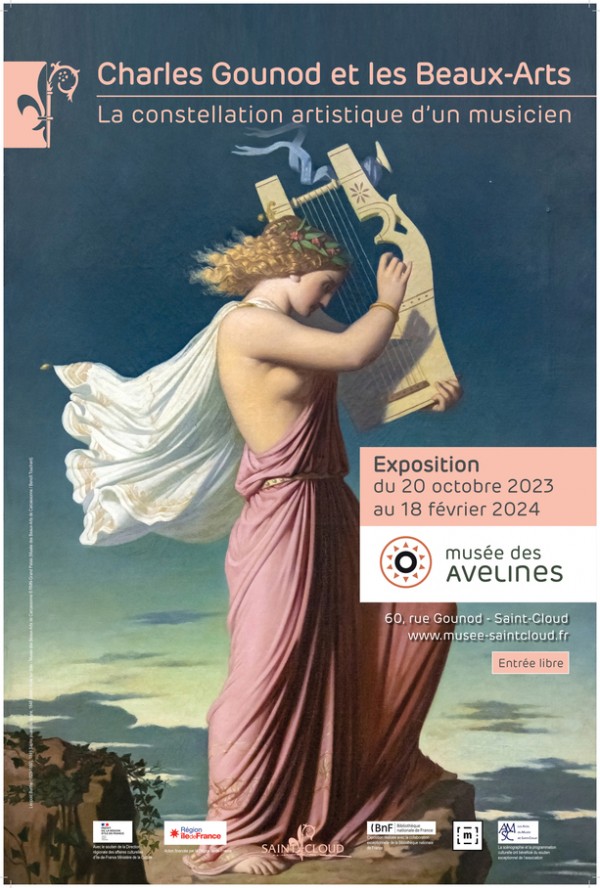
From October 20, 2023 to February 18, 2024, the museum lent the canvas Mort de Sappho (Cat. 625) as part of the exhibition Charles Gounod et les Beaux-Arts at the Musée des Avelines in Saint-Cloud.
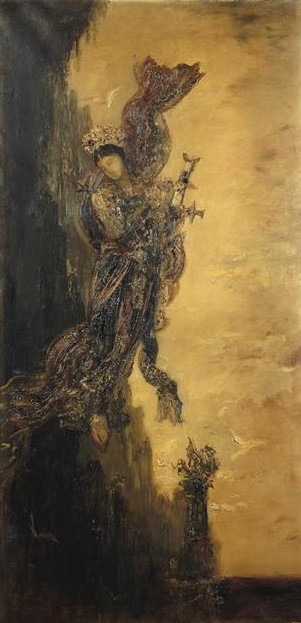
Gustave Moreau, Death of Sappho (Cat.625)
- RETOUR D'ASIE | Paris, Musée Cernuschi
-
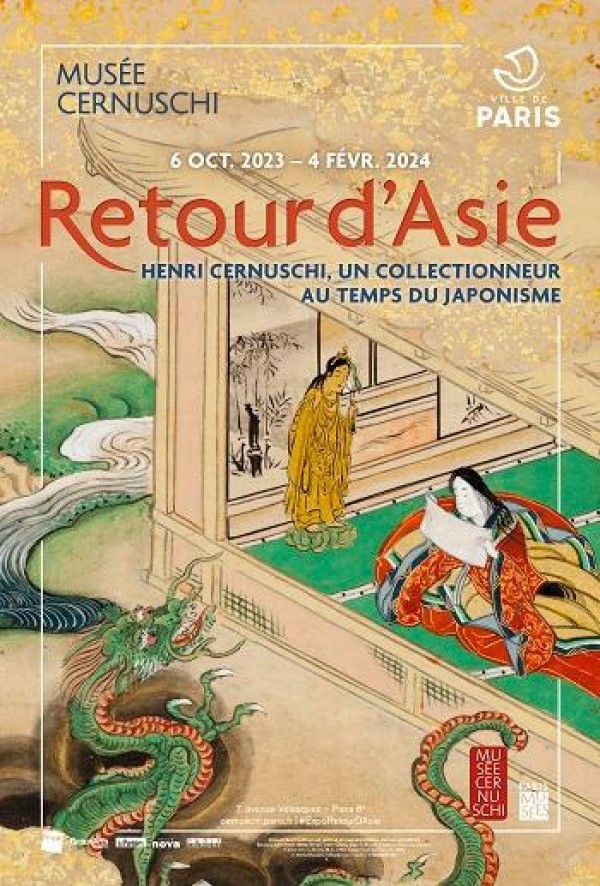
From October 6, 2023 to February 4, 2024, the Musée Cernuschi presented the exhibition Retour d'Asie.
The museum lent four drawings by Gustave Moreau.
From October 6 to December 18, 2023:
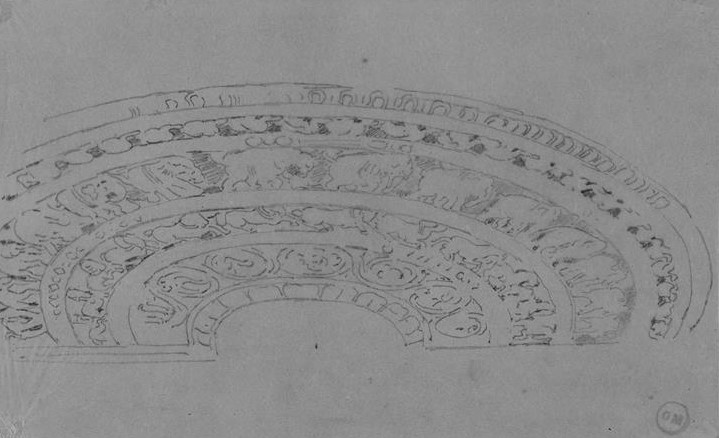
Gustave Moreau, Etude d'architecture (Des. 9541) 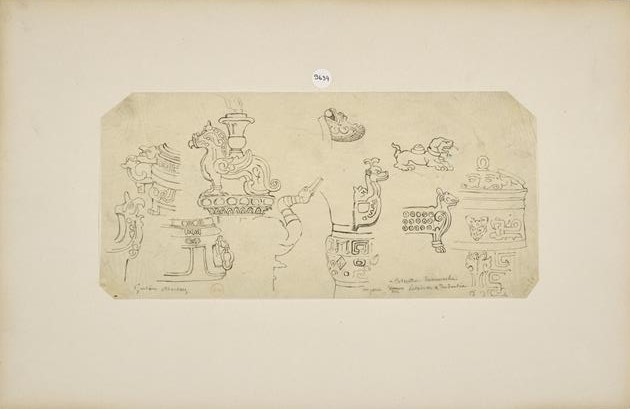
Gustave Moreau, Bronze Study (Des. 9634) From December 19, 2023 to February 4, 2024:
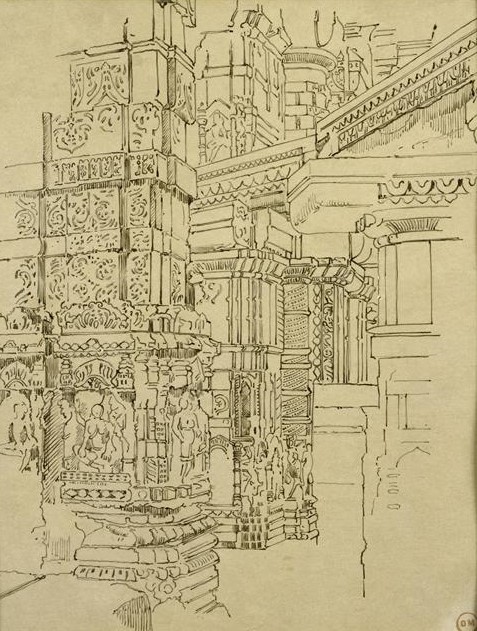
Gustave Moreau,Indian architecture (Des. 3123) 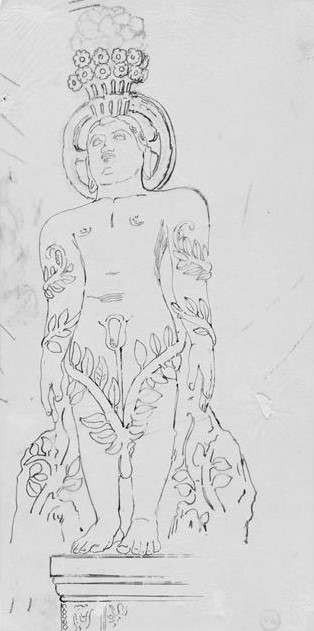
Gustave Moreau, Etude du saint personnage (Des. 9494)
- ANIMAUX FANTASTIQUES | Lens, Louvre-Lens
-
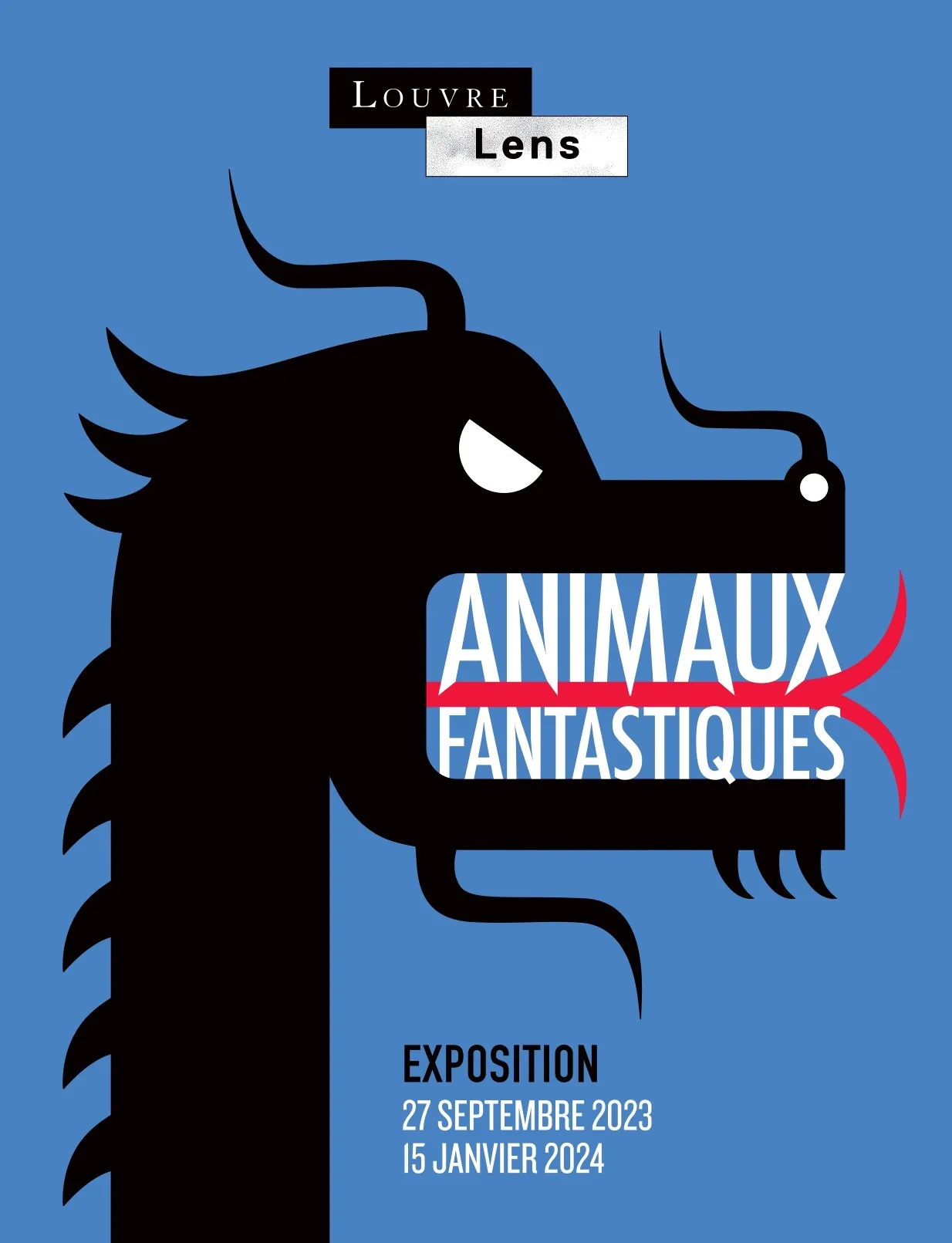
From September 27, 2023 to January 22, 2024,
the museum to lend various drawings and paintings to Louvre-Lens, as part of the exhibition Fantastic Animals.
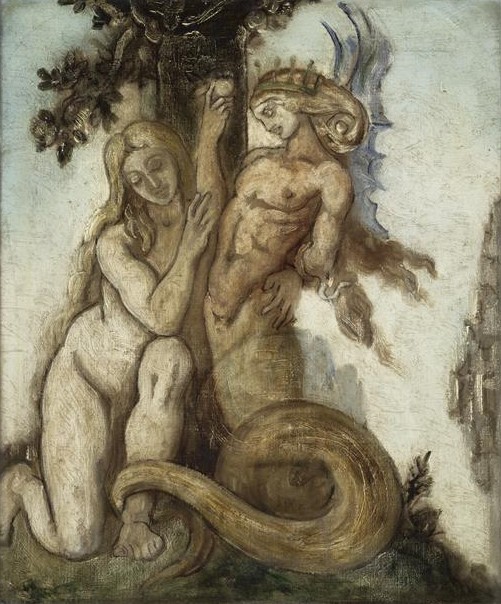
Gustave Moreau, Eve and the Serpent (Cat. 53) 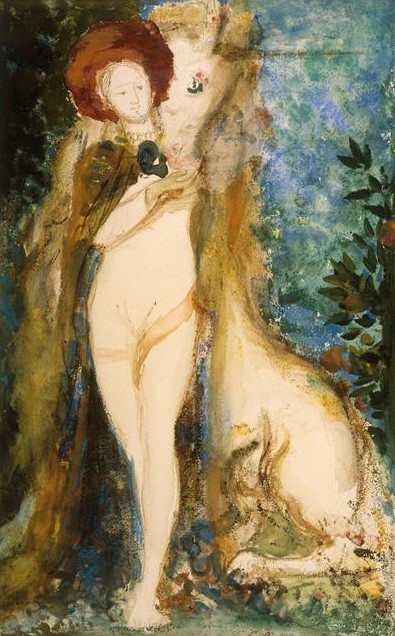
Gustave Moreau, La Licorne (Cat. 372) 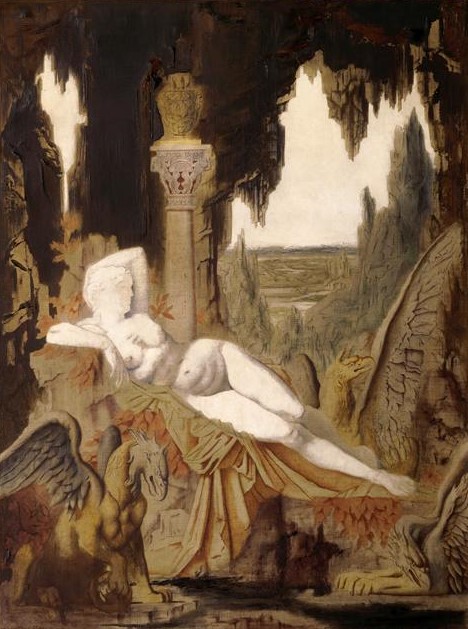
Gustave Moreau, Fée aux griffons (Cat. 580) 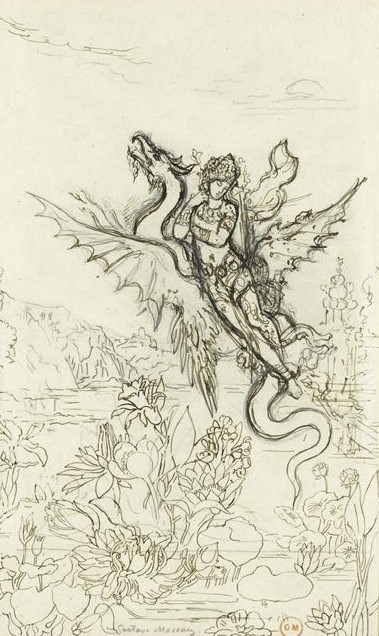
Gustave Moreau, Rêve d'Orient (Des. 816) 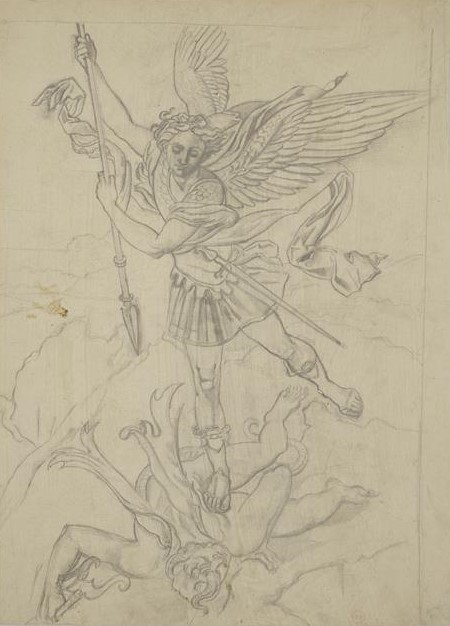
Gustave Moreau, Study of Saint Michael slaying the dragon (Des. 11249) 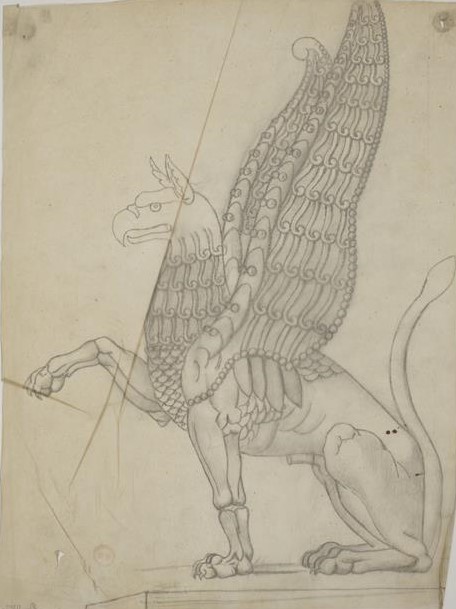
Gustave Moreau, Etude de Griffon pour Oreste et les Erynies (Des. 11320)
In 2023:
- PLON-PLON, UN BONAPARTE ROUGE ET OR | Ajaccio, Palais Fesch
-
Œdipus and the Sphinx
From June 24 to October 2, 2023, the watercolor Oedipus and the Sphinx (Cat. 517), usually on view in the watercolor cabinet on the museum's third floor, is on view at the Palais Fesch in Ajaccio as part of the exhibition Plon-Plon, a red and gold Bonaparte.
Prince Napoleon (1822-1891), son of Jérôme Bonaparte, was a major figure in the art world under the Second Empire, and notably one of Moreau's first buyers. The exhibition is an opportunity to bring together works that belonged to him, or by artists he loved, as is the case with this watercolor.
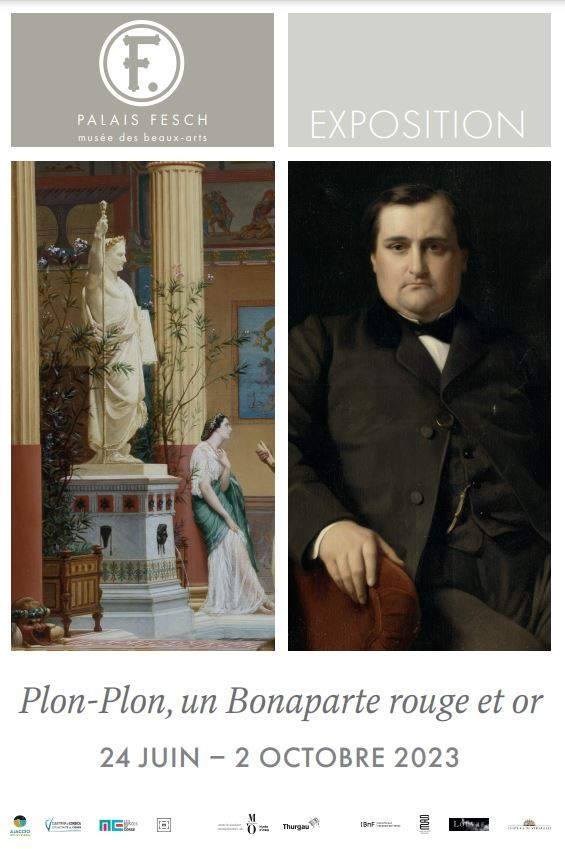
The iconography and composition of this small watercolor are similar to those of Œdipus and the Sphinx presented at the Salon of 1864, acquired by Jérôme Bonaparte, cousin of Napoleon III, and currently preserved at the Metropolitan Museum of Art (MET) in New York. Numerous drawings have been preserved for this composition. The watercolor, dated 1861, is, as the artist indicated, a "first idea".
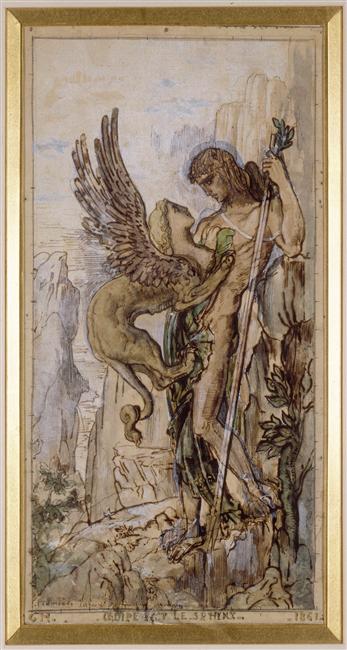
Gustave Moreau. Oedipus and the Sphinx, Cat. 517
Aquarelle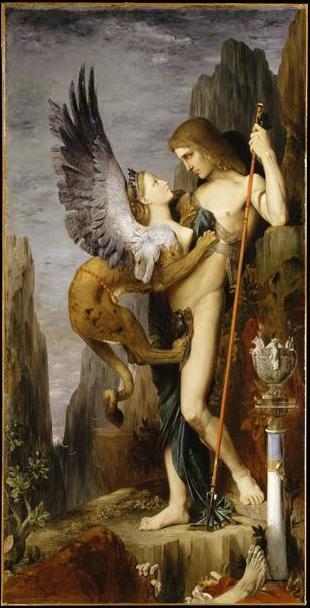
Gustave Moreau. Œdipus and the Sphinx, oil on canvas, New York, MET
- L’ÂGE D’OR. PARADIS, UTOPIES ET RÊVES DE BONHEUR, DE BRUEGHEL À SIGNAC | Ornans, musée Gustave Courbet
-
La Vie de l'Humanité
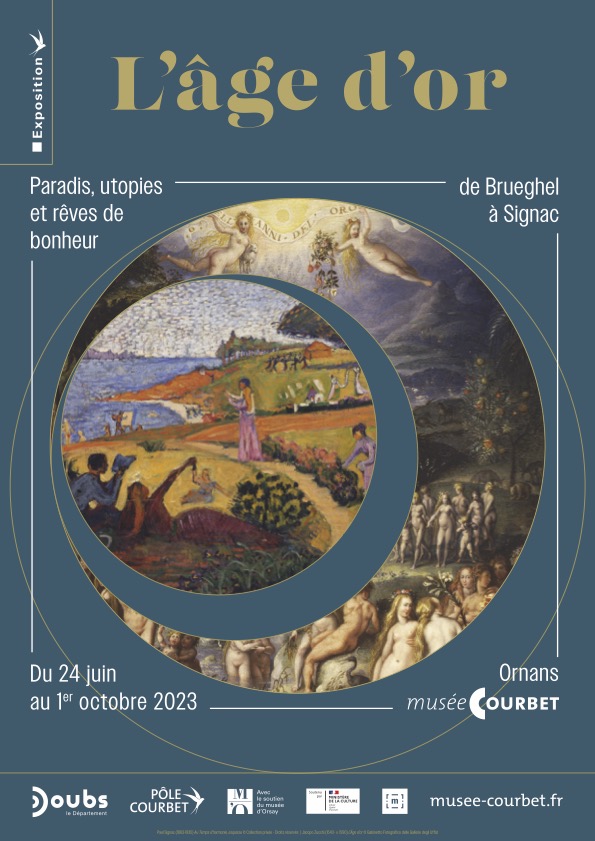
From June 24 to October 1, 2023, the exhibition The Golden Age. Paradis, Utopias and Dreams of Happiness, from Brueghel to Signac at the Musée Gustave Courbet (Ornans) features two works by Moreau: the panel L'Âge d'or, Adam, le Midi, l'Extase (Cat. 1155-2), and the tracing La Vie de l'Humanité (Des. 1838).
Through 70 works on loan, the exhibition questions the revitalization and popularity of the L'Âge d'or myth in the arts from the 19th century to the turn of the 20th century, and with regard to major works of the past.
La Vie de l'Humanité, a "decorative and monumental" project
The two works on loan are to be seen in relation to the polyptych La Vie de l'Humanité (Cat. 216) composed in the 1880s, on permanent display on the museum's 3rd floor.
In this monumental work with its complex iconography, the painter expresses the correspondences between the ages of life, the seasons and the hours of the day.
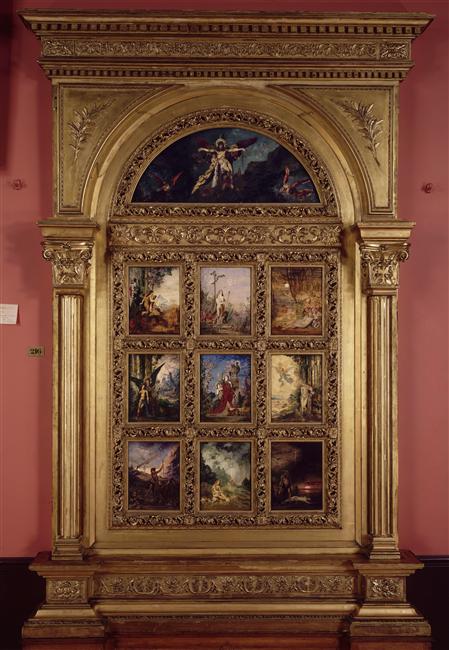
Gustave Moreau. La Vie de l'Humanité (Cat. 216), oil on wood 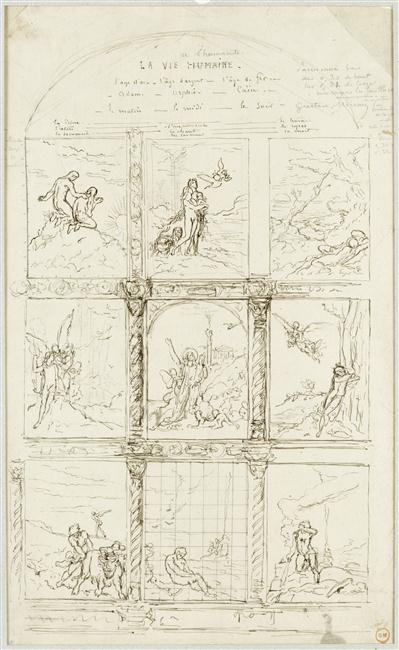
Gustave Moreau. La Vie de l'Humanité (Des. 1838), ink on tracing paper 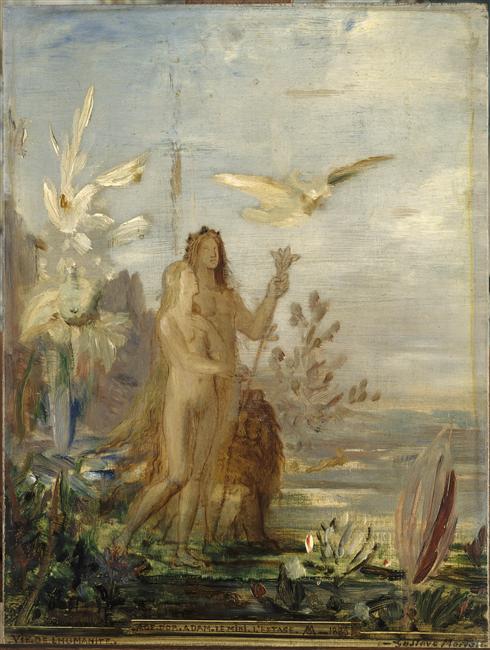
Gustave Moreau. L'Âge d'or, Adam, le Midi, l'Extase (Cat. 1155-2), huile sur bois The La Vie de l'Humanité layer (Des. 1838) retains traces of Moreau's hesitations about the symbolism and organization to be adopted. On the other hand, the idea of an organization in 9 panels surmounted by a lunette (although Christ is for the time being absent) seems well established.
The panel L'Âge d'or, Adam, le Midi, l'Extase (Cat. 1155-2) belongs to another version of the polyptych, kept in reserve at the museum, of a more sketchy finish than the version on display.
- SARAH BERNHARDT. ET LA FEMME CRÉA LA STAR | Paris, Petit Palais
-
Study for the Salome figure
Gustave Moreau. Salomé (Cat.880), oil on canvas
(C) RMN-Grand Palais / Christian JeanFrom April 14 to August 28, 2023, the canvas Étude pour la figure de Salomé (Cat. 880), usually on view on the museum's first floor, is exhibited at the Petit Palais in Paris, as part of the exhibition Sarah Bernhardt. Et la femme créa la star, organized to mark the centenary of the death of the actress (1844-1923).
This painted study is to be compared with the painting Salome Dancing Before Herod (Los Angeles, The Armand Hammer Museum of Art and Cultural Center), which caused a sensation at the 1876 Salon and for which it prepares the left-hand side.
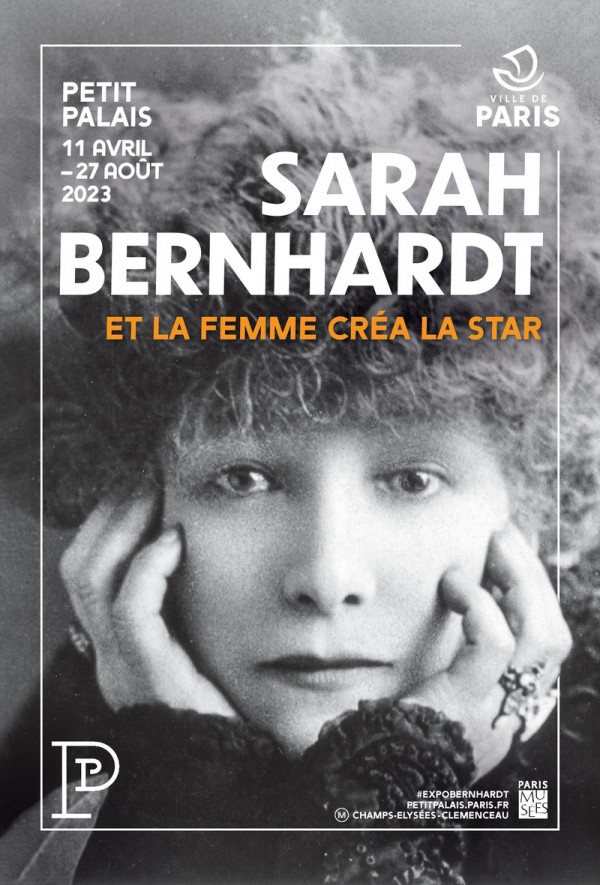
Sarah Bernhardt and Salomé
In 1891, Oscar Wilde penned the French-language tragedy Salomé, which he intended for Sarah Bernhardt. The actress, who was due to perform the play at London's Palace Theatre, had to interrupt rehearsals following censorship by the Lord Chamberlain, on the grounds that it was "illegal to represent biblical characters on stage". The play was banned from performance in England for almost forty years.
Sarah Bernhardt and Gustave Moreau
The actress appears in an article by Jean Lorrain (L'Événement, Paris, November 3, 1887): the writer relates that during a visit to the actress's home, he saw her contemplating a copy of the Roi David by Félix Henri Bracquemond (1833-1914), an etching after Gustave Moreau, which she owned and exhibited in her salon. Four states of the etching evoked by Lorrain are preserved in the Musée Gustave Moreau (Cat. 6, Inv. 13991 bis, Inv. 15610, Inv. 15611).
Sarah Bernhardt and Jean-Jacques Henner
The centenary was also celebrated at the Musée Jean-Jacques Henner, which presented a small exhibition Around Sarah Bernhardt from March 22 to June 26, 2023. Jean-Jacques Henner (1829-1905) and Sarah Bernhardt, both emblematic figures of artistic Paris at the time, frequented and admired each other. The Henner Museum, located at 43 avenue de Villiers, is housed in the former mansion of painter-decorator Guillaume Dubufe (1853-1909), which adjoined Sarah Bernhardt's mansion, and in which the artist moved in 1878. Sold in 1922 to Marie Henner, the painter's niece, the studio house was transformed into a museum. The setting of the Henner museum is particularly well-suited to paying tribute to the "Divine", who inhabited and enlivened the intellectual and artistic effervescence of the Plaine Monceau for several decades.
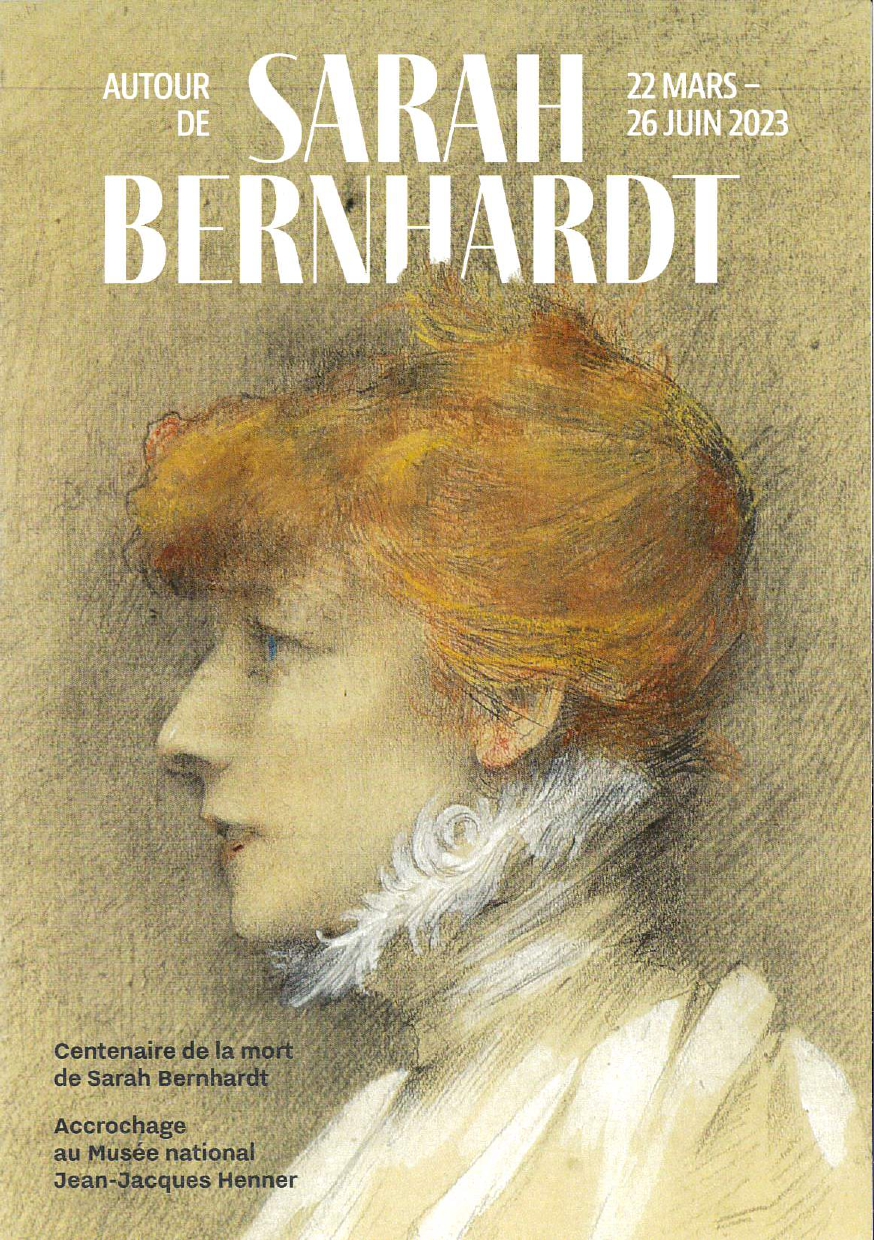
Overseas
In 2024:
- L'INCANTO DI ORFEO | Florence (Italy), Palazzo Medici Riccardi
-
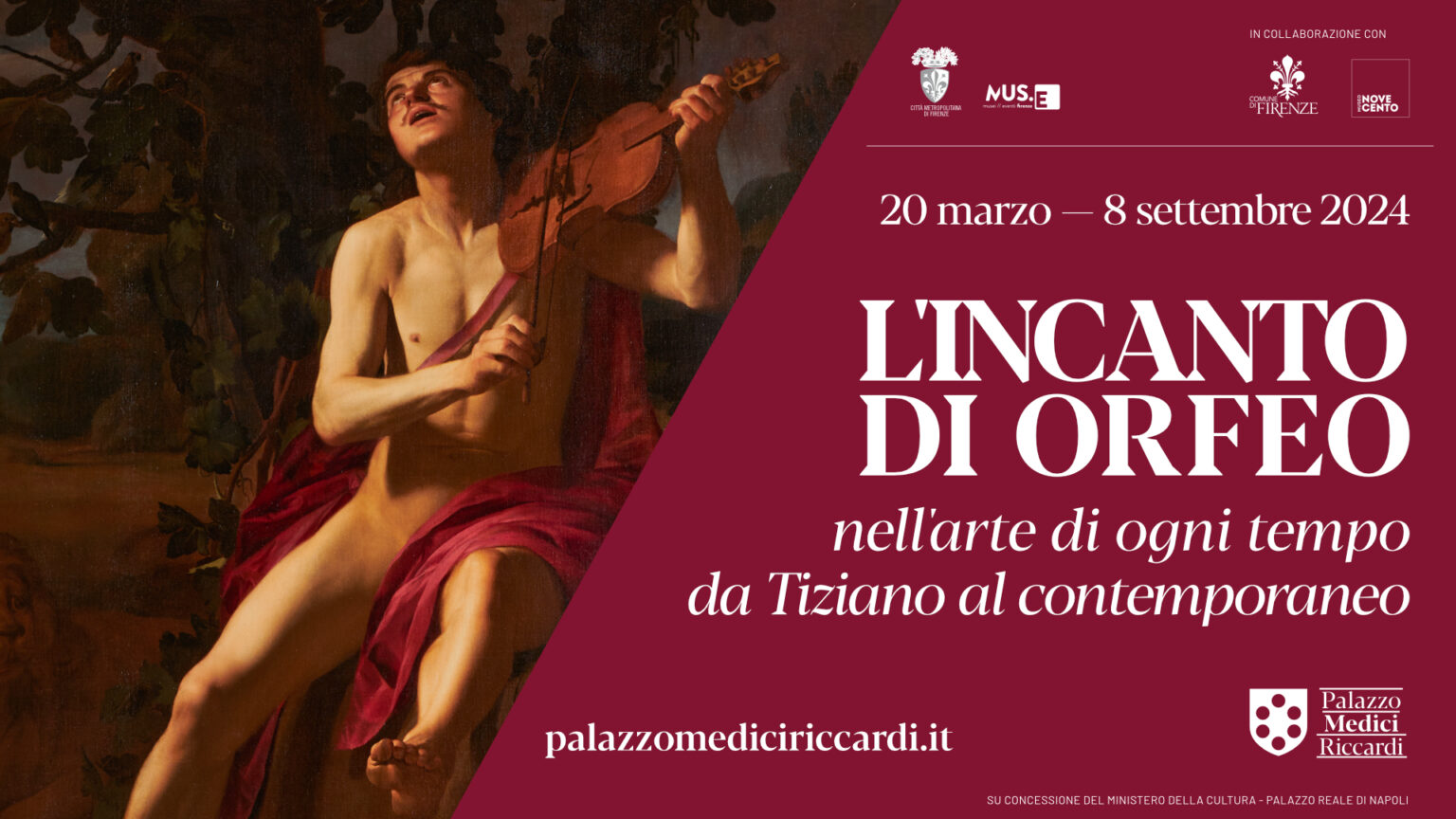
From March 20 to September 8, 2024, the Palazzo Medici Riccardi in Florence (Italy) hosts the exhibition L'incanto di Orfeo, dealing with the mythological figure of Orpheus.
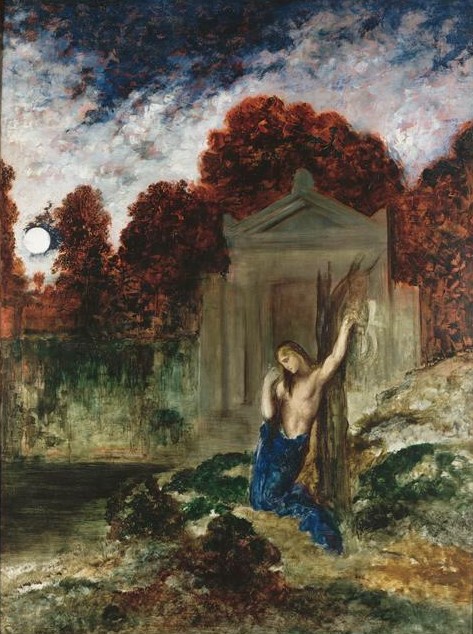
Gustave Moreau, Orphée sur la tombe d'Eurydice (Cat. 194) The museum is lending a painting by Gustave Moreau, Orpheus at the Tomb of Eurydice (Cat. 194).
- 1863 - PARIS - 1874 : REVOLUTION IN ART | Cologne (Germany), Wallraf-Richartz Museum
-
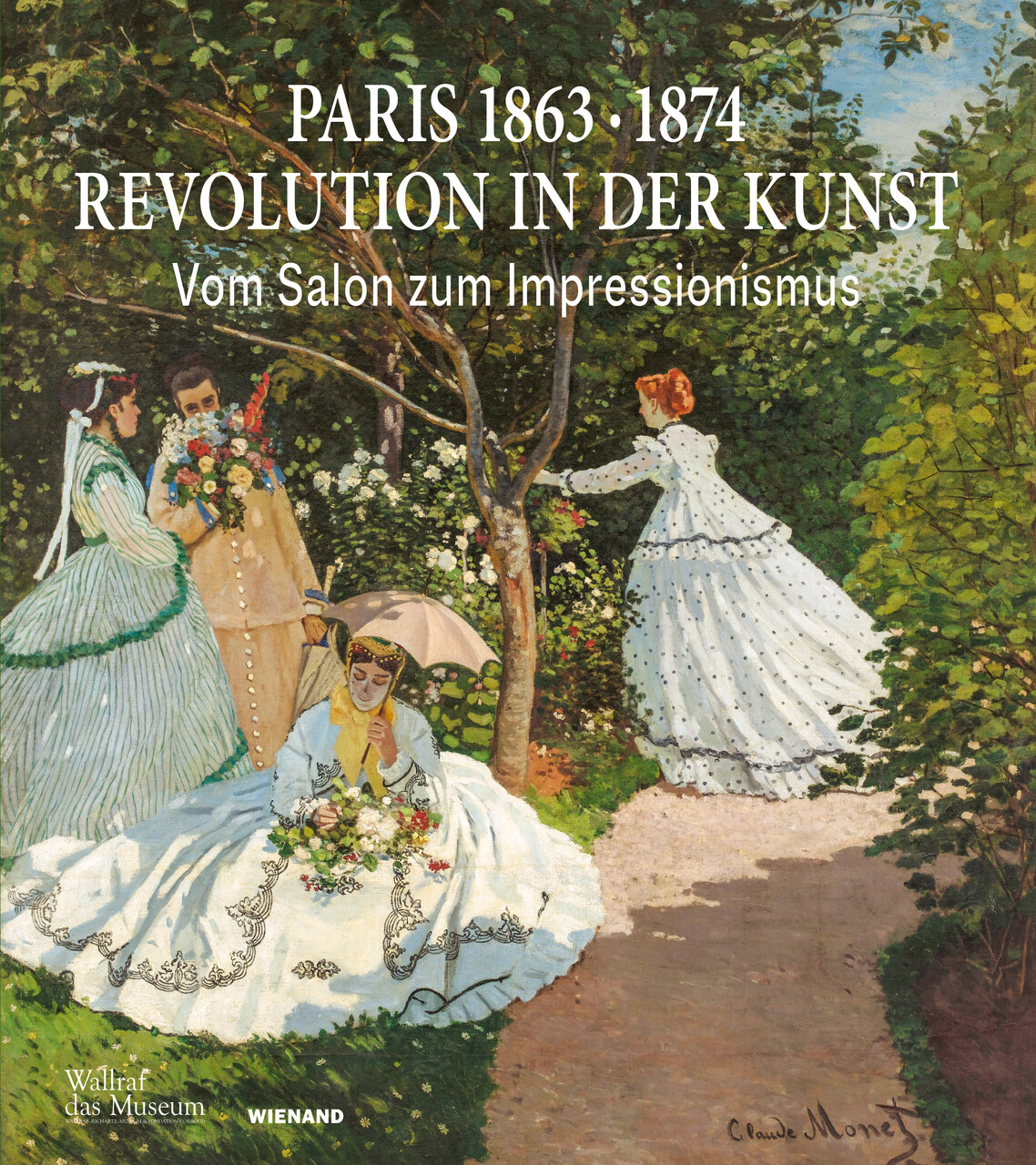
From March 15 to July 28, 2024, the Wallraf-Richartz Museum in Cologne, Germany, presents the exhibition 1863 - PARIS - 1874: Revolution in Art.
The Gustave Moreau Museum is lending two paintings.
From March 15 to May 27, 2024:
May 27 to July 28, 2024:
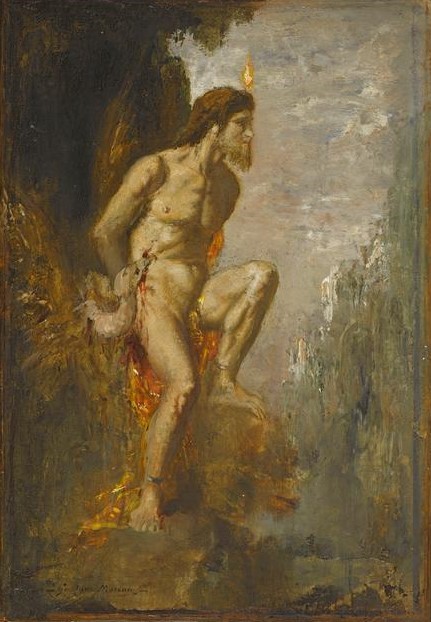
Gustave Moreau, Prométhée (Cat. 852) 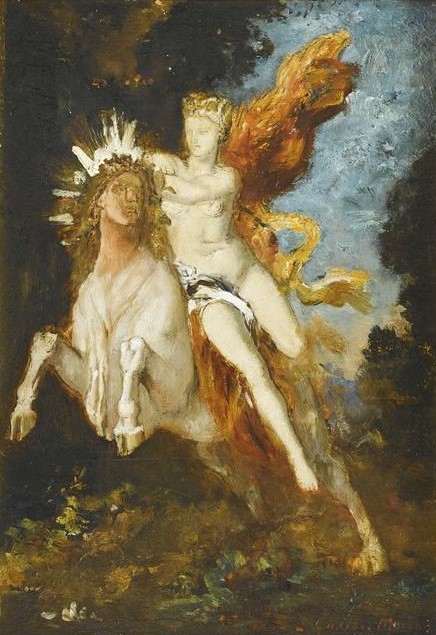
Gustave Moreau, Europe (Cat.694)
In 2023:
- FEMME FATALE: BLICK - MACHT - GENDER | Hamburg (Germany), Kunsthalle
-
L'Apparition
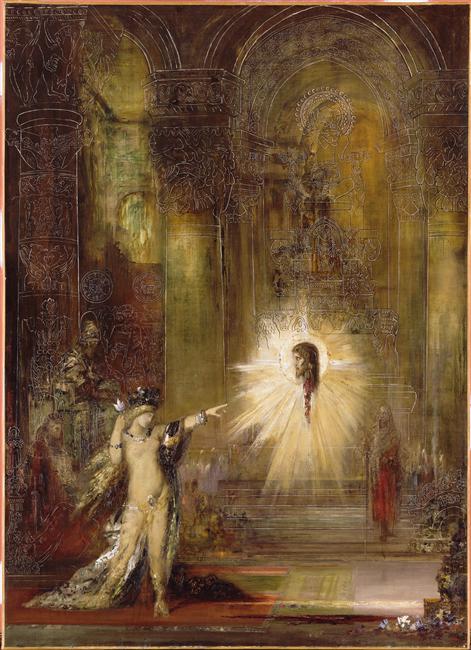
Gustave Moreau. L'Apparition (Cat. 222), oil on canvas (C) RMN-Grand Palais / René-Gabriel Ojéda From December 9, 2022 to April 10, 2023, the canvas l'Apparition (Cat. 222), usually on view on the museum's third floor, was on view at the Kunsthalle Hamburg (Germany) as part of the exhibition Femme Fatale: Blick - Macht - Gender.
On the same theme, the museum keeps the Dancing Salome (Cat. 211), known as the Tattooed Salome, in the second room of the museum's third floor.


